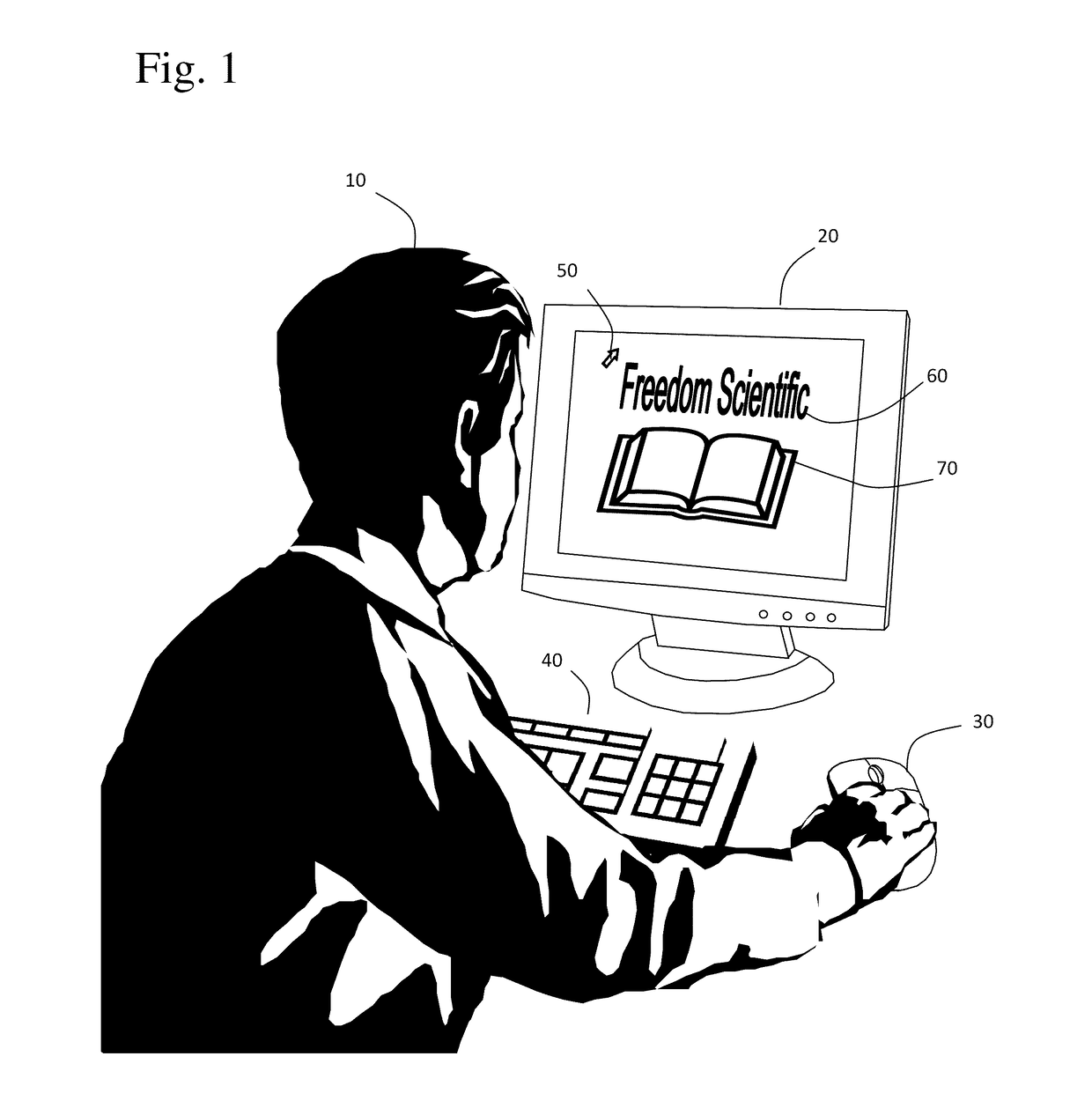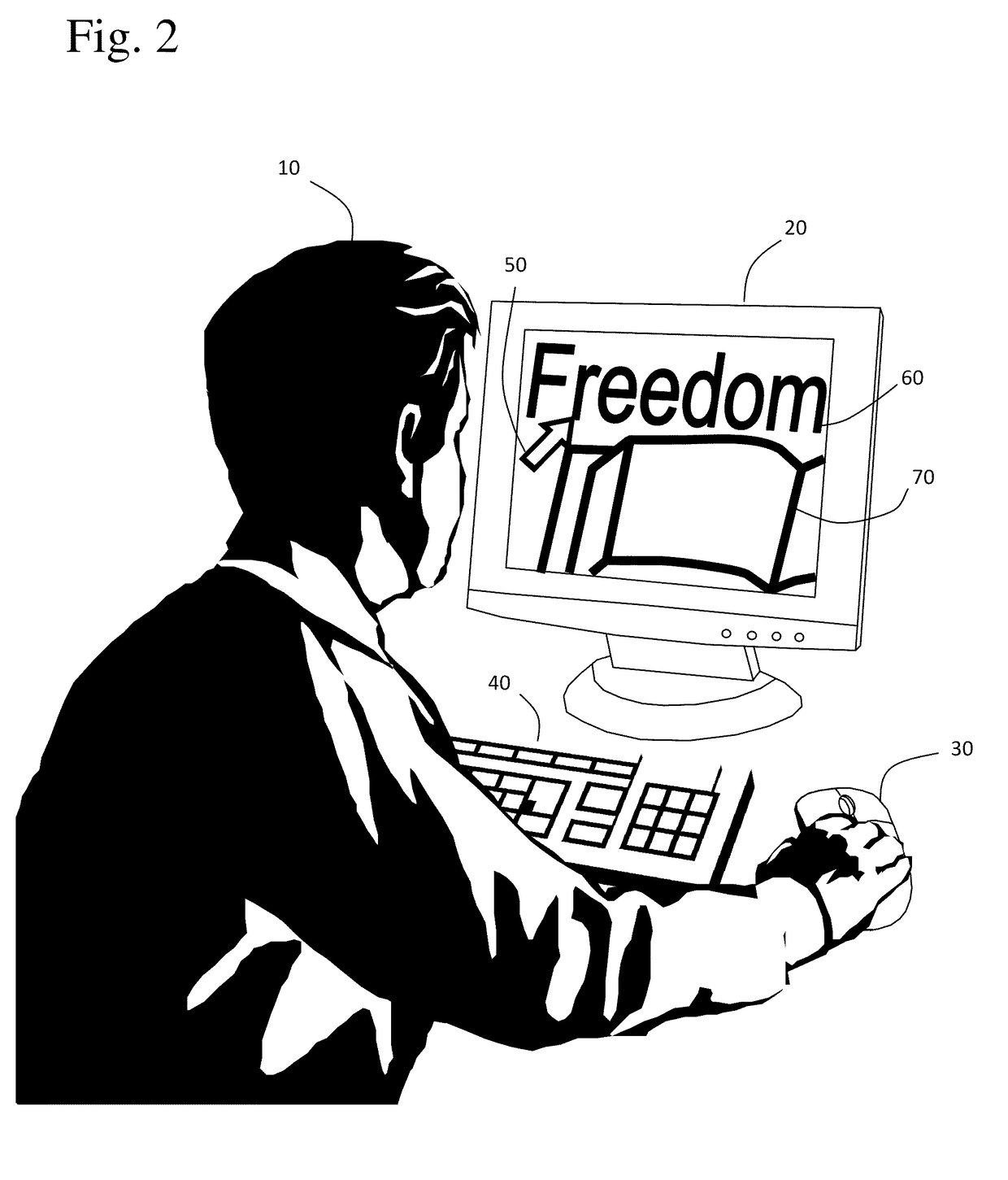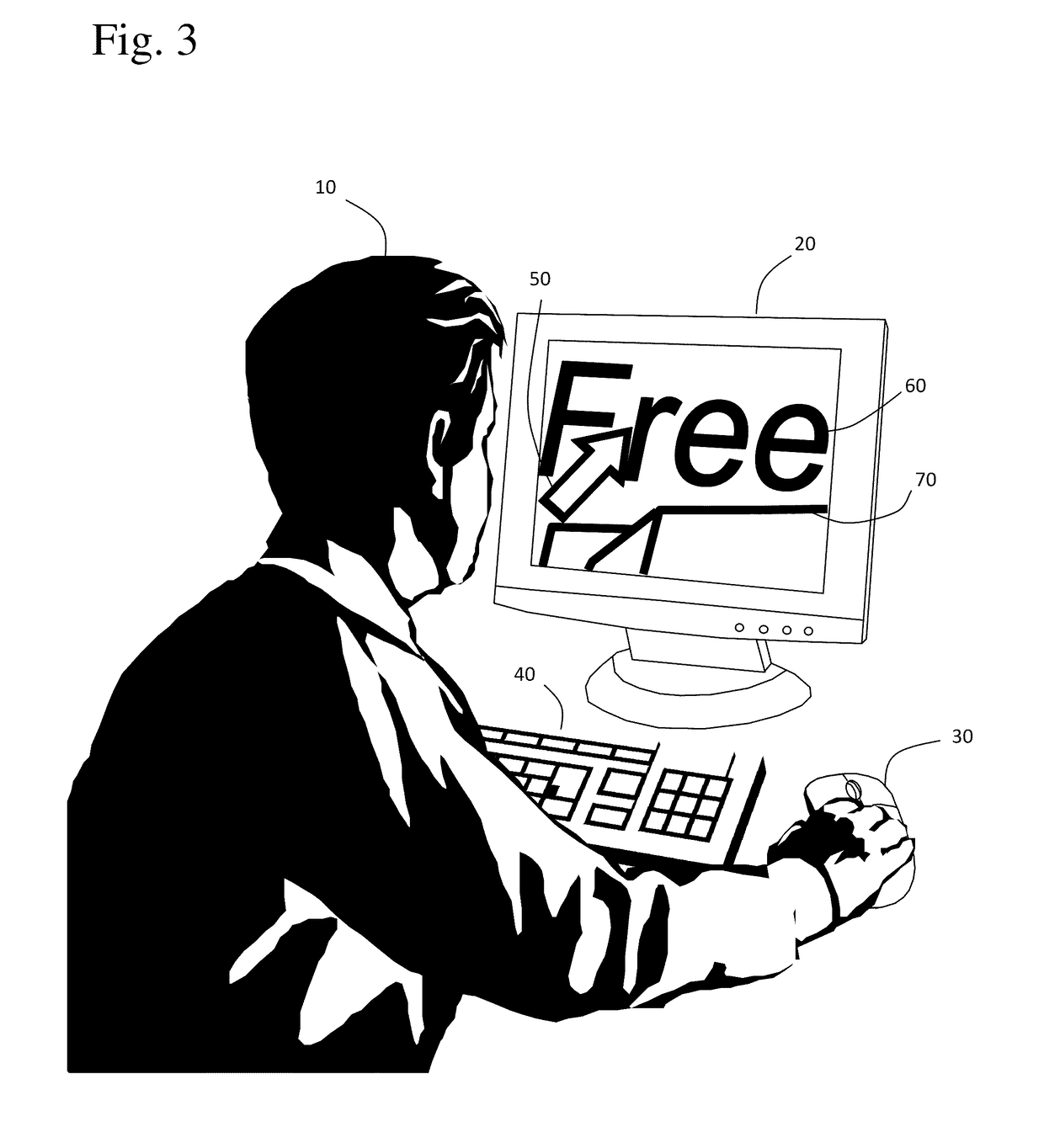Vector-based magnified pointer
a vector-based, pointer technology, applied in the field of magnified pointers, can solve the problems of over-magnification of the pointing indicia, cpu cycles, and inability to smoothly scale the mouse pointer or other graphical elements, and achieve the effect of facilitating efficiency and responsiveness, and greatly enhancing the ability to scale smoothly
- Summary
- Abstract
- Description
- Claims
- Application Information
AI Technical Summary
Benefits of technology
Problems solved by technology
Method used
Image
Examples
Embodiment Construction
[0032]Turning now to FIG. 1, low vision user 10 manipulates views on monitor 20 via mouse 30 and keyboard 40. Pointing indicia 50 is shown as an arrow cursor for exemplary purposes but could also be a caret. A cursor is the graphical image that represents the mouse and its movements on a Cartesian coordinate plane. It can take many shapes including, but not limited to, an arrow for pointing, a hand, an hourglass, or an I-shaped text selector. The caret, on the other hand, is the blinking indicia that is used to enter text. When low vision user 10 types on keyboard 40, the letter appears at the caret, and the caret moves forward by 1 space. To view the relative magnification levels, display text 60 and display graphic 70 are provided in FIG. 1.
[0033]FIG. 1 shows the GUI, pointing indicia 50, display text 60 and display graphic 70 unmagnified. In FIG. 2, pointing indicia 50, display text 60 and display graphic 70 are shown, conceptually, at a 2-fold magnification level. In FIG. 3, poi...
PUM
 Login to View More
Login to View More Abstract
Description
Claims
Application Information
 Login to View More
Login to View More - R&D
- Intellectual Property
- Life Sciences
- Materials
- Tech Scout
- Unparalleled Data Quality
- Higher Quality Content
- 60% Fewer Hallucinations
Browse by: Latest US Patents, China's latest patents, Technical Efficacy Thesaurus, Application Domain, Technology Topic, Popular Technical Reports.
© 2025 PatSnap. All rights reserved.Legal|Privacy policy|Modern Slavery Act Transparency Statement|Sitemap|About US| Contact US: help@patsnap.com



